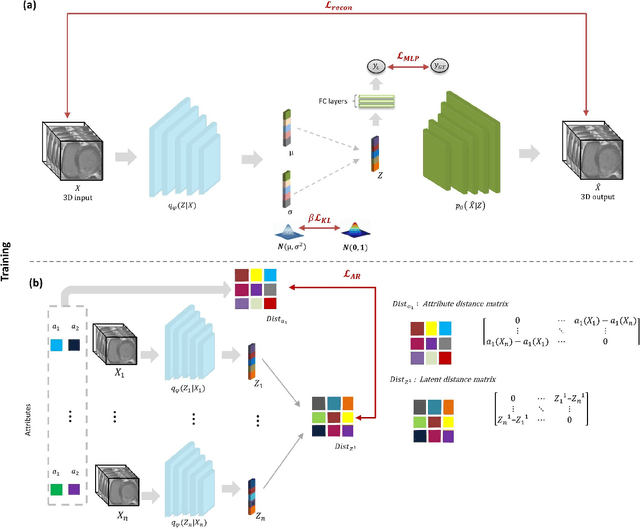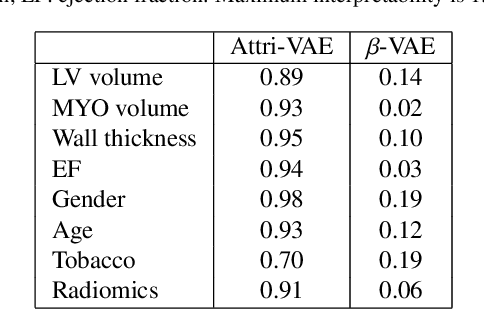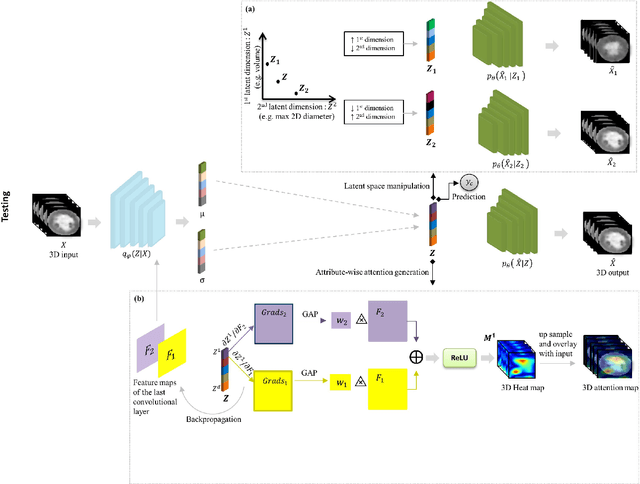Attri-VAE: attribute-based, disentangled and interpretable representations of medical images with variational autoencoders
Paper and Code
Mar 27, 2022



Deep learning (DL) methods where interpretability is intrinsically considered as part of the model are required to better understand the relationship of clinical and imaging-based attributes with DL outcomes, thus facilitating their use in reasoning medical decisions. Latent space representations built with variational autoencoders (VAE) do not ensure individual control of data attributes. Attribute-based methods enforcing attribute disentanglement have been proposed in the literature for classical computer vision tasks in benchmark data. In this paper, we propose a VAE approach, the Attri-VAE, that includes an attribute regularization term to associate clinical and medical imaging attributes with different regularized dimensions in the generated latent space, enabling a better disentangled interpretation of the attributes. Furthermore, the generated attention maps explained the attribute encoding in the regularized latent space dimensions. The Attri-VAE approach analyzed healthy and myocardial infarction patients with clinical, cardiac morphology, and radiomics attributes. The proposed model provided an excellent trade-off between reconstruction fidelity, disentanglement, and interpretability, outperforming state-of-the-art VAE approaches according to several quantitative metrics. The resulting latent space allowed the generation of realistic synthetic data in the trajectory between two distinct input samples or along a specific attribute dimension to better interpret changes between different cardiac conditions.
 Add to Chrome
Add to Chrome Add to Firefox
Add to Firefox Add to Edge
Add to Edge